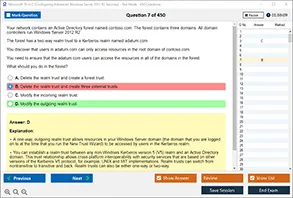Introduction:
In the world of networking, the transition from IPv4 to IPv6 has become increasingly important. IPv6 provides a larger address space, offering various types of addresses that enable more efficient and flexible networking. Among these address types, unicast addresses play a critical role. Unicast addresses are used to identify a unique sender and a unique receiver for data transmission, ensuring that data sent from one device reaches only the intended recipient.
This blog will explore the two types of IPv6 unicast addresses in detail, examining their structure, usage, and importance in modern networking. As the demand for IPv6 addresses continues to grow, understanding these address types is crucial for anyone involved in networking or preparing for relevant certification exams, such as the CCNP Security Certification.
IPv6 Unicast Addresses: Overview
Before diving into the specific types of unicast addresses, it’s essential to understand the concept of unicast addressing in IPv6. In IPv6, unicast addresses are those that identify a unique sender and a unique receiver. When a device sends a packet to a unicast address, it is intended for exactly one recipient.
IPv6 unicast addresses are divided into several categories, but for the purposes of this article, we will focus on two primary types:
-
Global Unicast Addresses (GUAs)
-
Link-Local Addresses (LLAs)
Each type of unicast address has distinct features that make it suitable for different networking scenarios. Let's explore both in more detail.
Global Unicast Addresses (GUAs)
Global Unicast Addresses (GUAs) are the IPv6 equivalent of public IPv4 addresses. They are globally routable and unique across the entire Internet. These addresses are assigned by the Internet Assigned Numbers Authority (IANA) and are intended to be used for communication over the global IPv6 network.
Structure of Global Unicast Addresses
A Global Unicast Address is typically represented in the following format:
The first three bits of a Global Unicast Address are set to 001, which gives the address block . This address range spans 2000:: To 3FFF ensuring a large address space. The full structure of a Global Unicast Address consists of several parts:
-
Global Routing Prefix (GRP): This is the first part of the address and is used to identify the network segment. It is allocated by the IANA and can be further subdivided by regional Internet registries (RIRs).
-
Subnet ID: This part identifies a specific subnet within the network. Organizations can use the subnet ID to create multiple subnets within their network.
-
Interface ID: The final part of the Global Unicast Address is the Interface ID, which uniquely identifies an individual device on the subnet. It is often derived from the device's MAC address using the Modified EUI-64 format.
Usage of Global Unicast Addresses
Global Unicast Addresses are used in situations where devices need to communicate across the global Internet. These addresses allow for unique identification and routing of packets between devices located in different geographical locations. They are crucial for devices that require access to external networks, such as web servers, routers, and client machines connecting to the broader Internet.
Link-Local Addresses (LLAs)
Link-Local Addresses (LLAs) are used for communication between devices within the same local network segment. Unlike Global Unicast Addresses, Link-Local Addresses are not routable beyond the local link and are used primarily for network configuration and discovery.
Structure of Link-Local Addresses
Link-Local Addresses always begin with the prefix:
This means that any IPv6 address starting with the bits 1111 1110 falls within the Link-Local Address range. The range of Link-Local Addresses spans from FE80:: to FEBF. The structure of a Link-Local Address is as follows:
-
Prefix: The first 10 bits (FE80::/10) are reserved for Link-Local Addresses, ensuring that they are only valid within the local link.
-
Interface ID: Similar to Global Unicast Addresses, Link-Local Addresses also include an Interface ID that uniquely identifies the device on the link. This ID is typically derived from the device's MAC address using the EUI-64 format.
-
Usage of Link-Local Addresses
Link-Local Addresses are used for communication between devices on the same physical network segment, such as a local area network (LAN). They are essential for the configuration of devices on the network and are often used in the following scenarios:
-
Neighbor Discovery Protocol (NDP): Devices use Link-Local Addresses to discover each other’s presence on the local link and determine their link-layer addresses (similar to ARP in IPv4).
-
Autoconfiguration: Devices can automatically assign themselves Link-Local Addresses when they are first connected to a network, enabling basic communication for configuration purposes.
-
Routing Protocols: Some routing protocols use Link-Local Addresses for communication between routers within a local network.
-
Conclusion
IPv6 introduces a range of address types, and understanding the different types of unicast addresses is crucial for anyone involved in networking. Global Unicast Addresses (GUAs) provide global reachability, making them suitable for devices communicating over the Internet. On the other hand, Link-Local Addresses (LLAs) are confined to local networks, enabling devices to communicate within the same subnet for configuration and discovery purposes.
Both of these address types are fundamental to the functioning of IPv6 networks, and it is important to understand how they work, especially for networking professionals and individuals preparing for certifications like the CCNP Security Certification.
By gaining a deep understanding of IPv6 unicast addresses, you’ll be better equipped to manage and troubleshoot modern networking environments. Whether you're a beginner or an experienced professional, mastering these concepts is essential for achieving success in the world of IPv6 networking.
1.What is the primary function of a Global Unicast Address in IPv6?
A) Communication within a local network
B) Communication between a unique sender and receiver over the Internet
C) Identifying multiple devices on the same network
D) Used for routing between local and global networks
2.Which IPv6 unicast address type is automatically configured on devices within the same network?
A) Global Unicast Address
B) Link-Local Address
C) Multicast Address
D) Anycast Address
3.What is the range of the Global Unicast Address in IPv6?
A) FE80::/10 to FEBF::/10
B) 2000::/3 to 3FFF::/3
C) 2001::/32 to 2002::/32
D) FF00::/8
4.Which of the following is true about Link-Local Addresses in IPv6?
A) They can be routed globally
B) They are only valid within the local network segment
C) They are used for Internet communication
D) They are manually assigned by network administrators
Answer: B) They are only valid within the local network segment
5.What part of the IPv6 Global Unicast Address identifies the network segment?
A) Interface ID
B) Subnet ID
C) Global Routing Prefix
D) Link-Local Prefix
6.Which protocol primarily uses Link-Local Addresses in IPv6 for network discovery?
A) Border Gateway Protocol (BGP)
B) Internet Control Message Protocol (ICMP)
C) Neighbor Discovery Protocol (NDP)
D) Routing Information Protocol (RIP)
7.What is the key difference between a Global Unicast Address and a Link-Local Address?
A) Global Unicast addresses are not routable, while Link-Local addresses are
B) Global Unicast addresses are routable over the global Internet, while Link-Local addresses are not
C) Global Unicast addresses are used for multicast communication
D) There is no difference between them
8.Which part of an IPv6 address is typically derived from a device's MAC address in the case of Link-Local addresses?
A) Interface ID
B) Subnet ID
C) Global Routing Prefix
D) Link-Local Prefix
9.Which IPv6 address type would be used for communication between devices on the same local network without requiring routing?
A) Global Unicast Address
B) Link-Local Address
C) Multicast Address
D) Anycast Address
Answer: B) Link-Local Address
10.In IPv6, what is the function of the Interface ID in a Global Unicast Address?
A) Identifies the device on a local network
B) Defines the network's routing information
C) Uniquely identifies a device within a subnet
D) Allocates the address to a specific region
Visit DumpsArena for the latest CCNP Security 300-725 Exam Dumps, comprehensive study guides, and practice tests to ensure your certification success!



